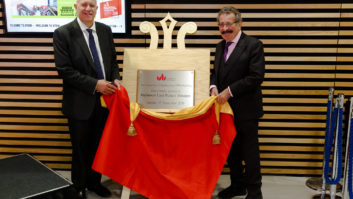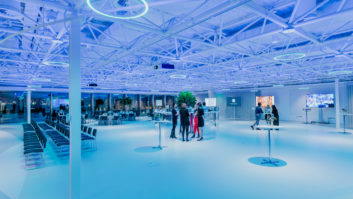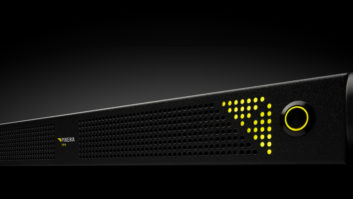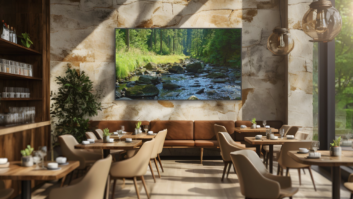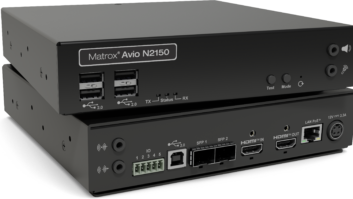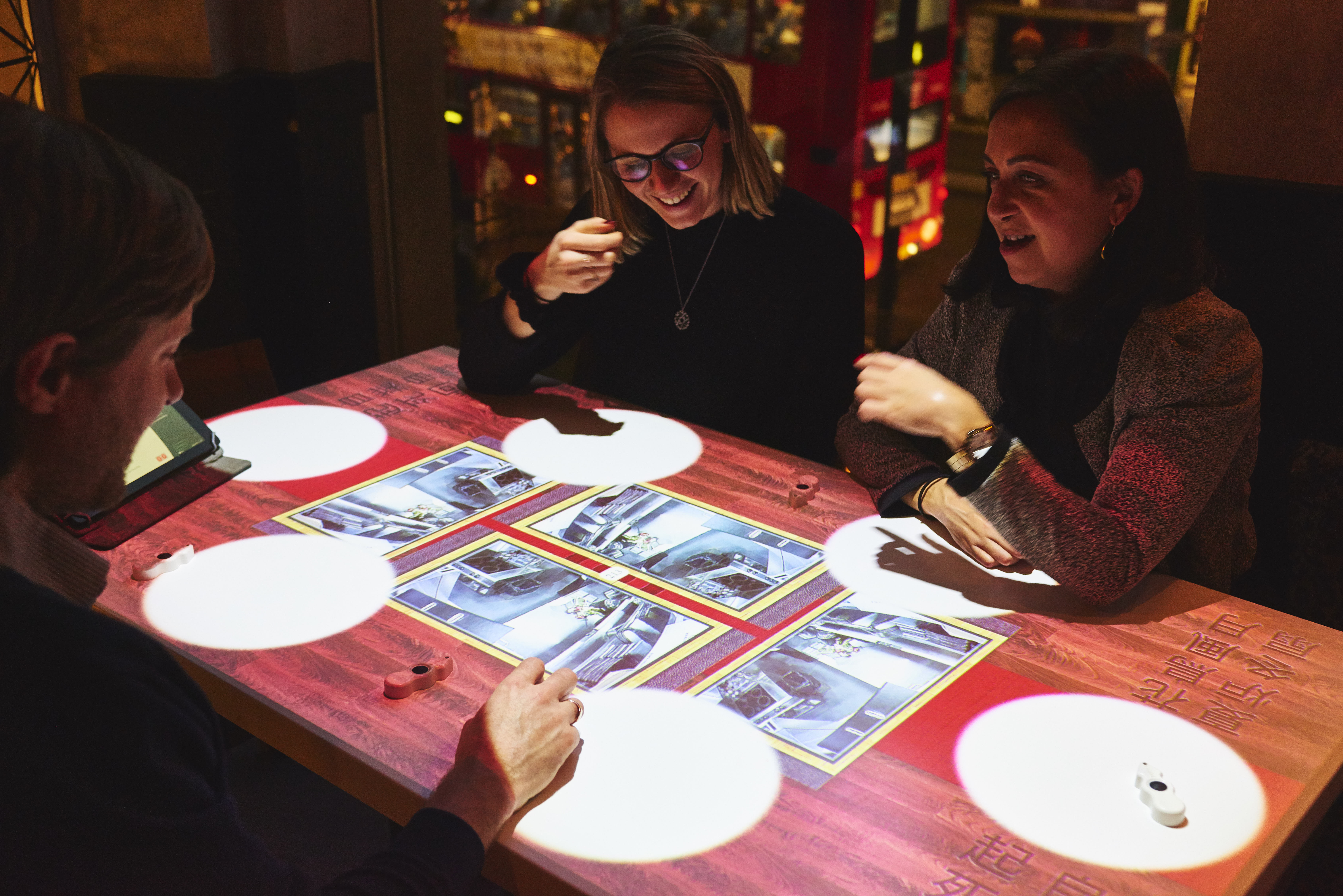
When discussing a restaurant, the conversation typically revolves around the quality of food and/or the quality of service.
The AV aspect – unless there’s a power-cut – is usually something that takes more of a back seat when discussing the experience – a side dish if you will.
Whilst the quality of food is paramount, the use of technology revolutionises the basic elements of dining-out
For Inamo, a restaurant chain in London (Soho, Camden and Covent Garden) serving up Pan-Asian cuisine, AV plays a central and unique role in the dining experience – some might argue more so than the food itself.
It’s a restaurant like no other, with every diner partaking in a rich, personalised, deep filled technology experience from the moment they sit down to the moment they leave.
Features:
Chef-cam – live video feed from the kitchen
The ability to draw on your table surface on different fun and customisable backgrounds (e.g. blackboard, school desk, brick wall, etc.)
A choice of patterns and images as a ‘virtual-tablecloth’, that are themed according to season of the year
The ability to personalise the images on your tables in advance (e.g. to feature pictures of the birthday girl/boy, or company logos, etc.)
The ability for guests to rate their dishes, service, and overall experience at the end of their meal, as well as providing their email address
“Whilst the quality of food is paramount, the use of technology revolutionises the basic elements of dining-out,” Noel Hunwick, co-founder and marketing director of Inamo told AVTE during an exclusive chat.
He explained this is achieved thanks its interactive ordering system, powered by projectors embedded in the ceiling above each table.
Unlike a traditional sit down restaurant experience, the tables are not simply a flat surface on which to eat and drink. Far from it.
Play with your food
Each tables is a digital touch sensitive canvas panel, providing interactive features and customisation tools for guests.
Menus are digital, with drinks and dishes able to be viewed, selected and ordered at any time at the press of a button or tap of the table. If you’re not sure of your choice or portion size, you can even have an image of the dish displayed on a digital plate in front of you. Added information around its ingredients (allergy concerns) and reviews from other diners are also available. You can even watch your dish being cooked via a live stream from the kitchen – and to kill time while you wait, you can play interactive games directly on the table against your friends (or by yourself). If you’re alone (or just unsociable) you can even watch/view content from your own device, or if they’re there for business, conduct a presentation.
The technology, explained Hunwick, is designed to put the diner in control of their dining experience. In fact, interaction with a member of staff is almost eradicated completely.
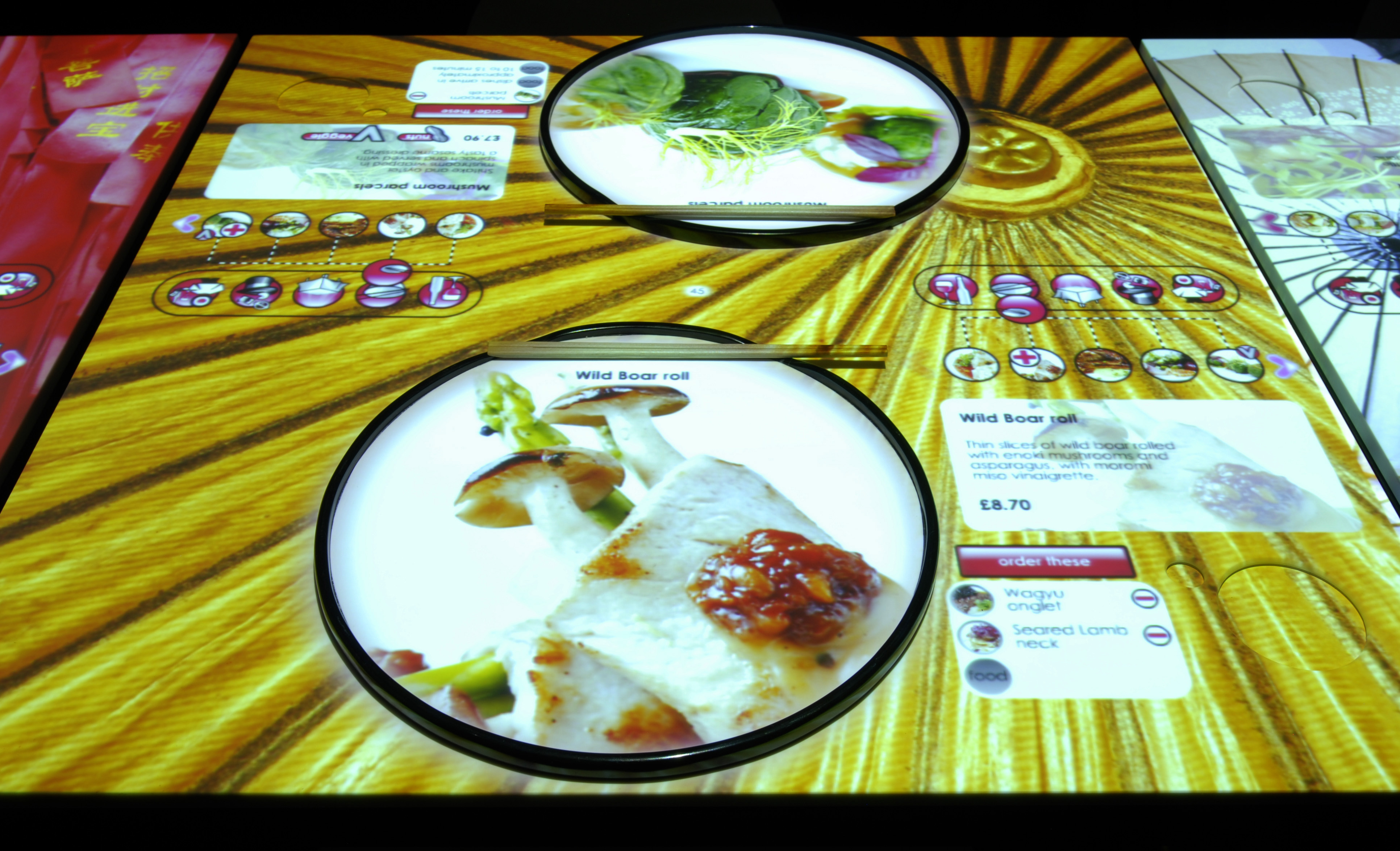
“The tech is a great ice-breaker and allows guests to have something fun and diverting whilst they wait for their food to arrive”
Recipe for success
“My business partner and I were sitting next to each other at a friend’s birthday in a restaurant and were really struggling to catch a waiter’s attention to buy another round of drinks,” he recalled. “We were in a situation where we wanted to spend some money, but they weren’t letting us. We just couldn’t get their attention and had sit and wait. So, we thought, wouldn’t it be great to reach down, touch the table, and another drink would arrive?’ and then be able to request the bill when we were ready.”
“We started brainstorming ideas, so Danny [Potter, co-founder or Inamo] and I created what we call the E-Table. We opened our Inamo Soho restaurant back in 2008 to prove our concept, then our second in St James’, in December 2010 (which relocated to Covent Garden in January 2016) and then our third in Camden, December 2016.”

Its appeal has and continues to catch the imaginations of the public, serving more than 3,000 diners every week across its growing number of locations.
The tech used in each restaurant varies, with each providing a different experience for diners.
Its Soho restaurant requires guests to touch the table to place orders, whilst in Covent Garden and Camden, a tablet-based version is used. Projection still plays a crucial role in customising the experience, with guests using an infrared ‘clicker’ controller to interact with the various functionalities available.
“When we began work on our technology for Imam Soho in 2005 smartphones and tablets had not yet been developed,” explained Hunwick.
“The original systems used a Canon projector and a mini-fan less PC in custom units in the ceiling. These communicated via Bluetooth with the touch sensitive panels in the tables through which guests interacted with our interactive ordering systems.
“Initially we had to have one projector per table of two guests, whereas now we can have one unit for up to six guests, thus reducing capital costs significantly.
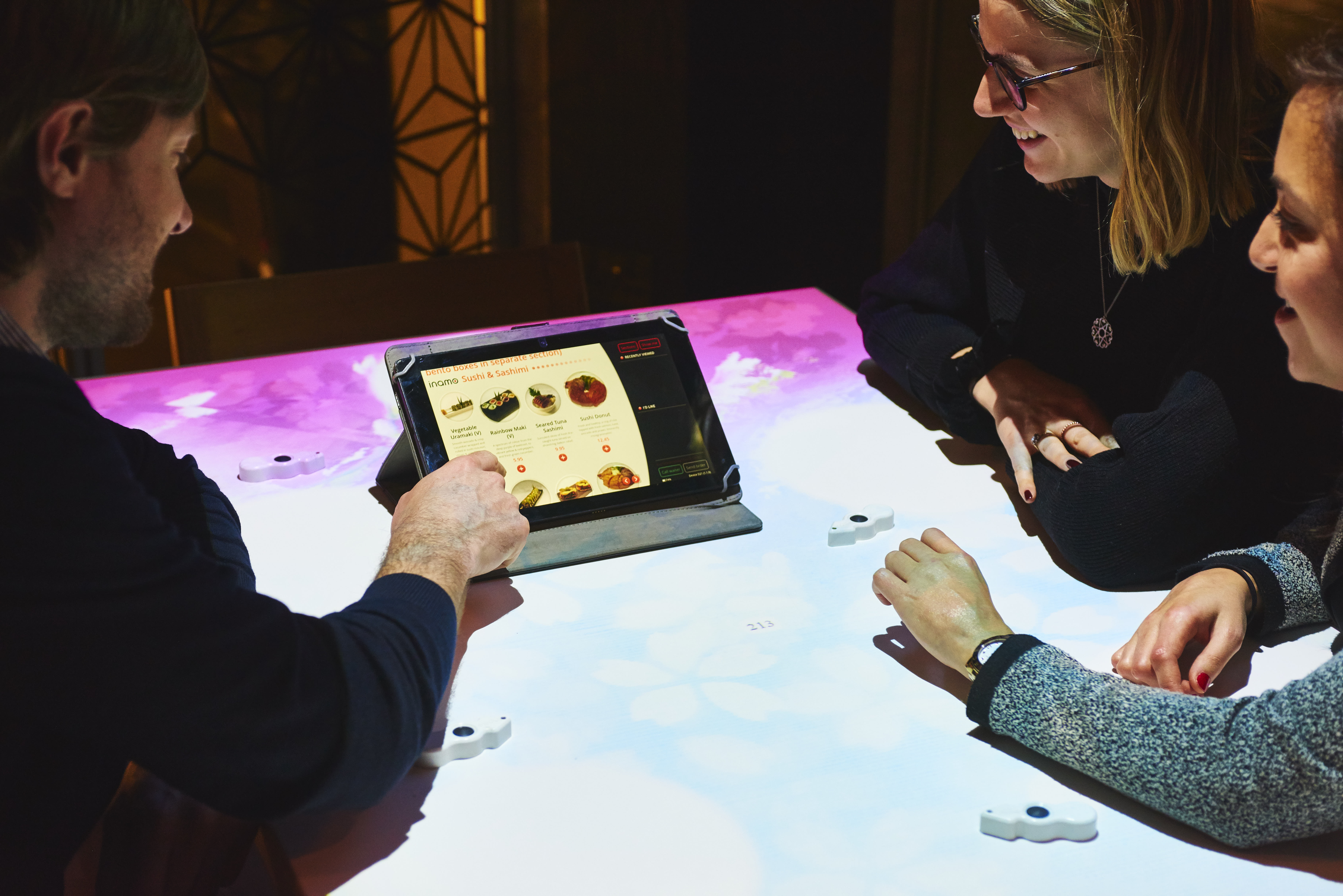
“The latest systems are housed in a single Ordamo unit (see column, left) that is mounted in the ceiling above the table surface. We no longer require any customisation of the table, we just use a white table surface that we feel works smoothly with the interactive infra-red clickers that guests use to interact with the projections. The tablets we use are off the shelf Android tablets. Each table in our Covent Garden and Camden restaurants has a tablet, and interactive table surface projections (one unit of which can cover up to six guests). The tablets communicate over a wireless network, and the projection units can be wired or wireless.”
No awkward silences
The interactive elements, he explained, play a key role in ensuring guests enjoy their experience, removing any potentially awkward silences and help drive conversation before, during and after the meal. As a result, the restaurant has become a destination for couples or those on their first date, recently ranked by Match.com as one of the top places for singles.
“The tech is a great icebreaker and conversation piece and allows guests to have something fun and diverting whilst they wait for their food to arrive,” said Hunwick. “We are constantly working to improve the interactive system and add more features, but we always knew that in order to keep relevant, the quality of the experience had to be measured as a whole, not only the concept’s edge.”
“The ease in being able to order additional dishes, drinks or an impulsive desert without needing to catch the eye of a passing waiter/waitress, also provides financial benefits”
Business benefits
The technology also provides Inamo with a number of significant business benefits, both from a financial perspective and on its performance.
Diners are able to rate and provide feedback about their experiences and the food and drink consumed whilst still at their table. Feedback, which can be used to measure and/or rectify any issues or grievances diners might have, be it the food, staff related.
“The ease in being able to order additional dishes, drinks or an impulsive desert without needing to catch the eye of a passing waiter/waitress, also provides financial benefits, whilst the speed in which they’re able to order, reduces the time spent in the restaurant, allowing for more tables to become available for waiting diners. Food and drink orders are also sent directly to the kitchen, reducing the risk of inaccuracies, lost tickets and delays.
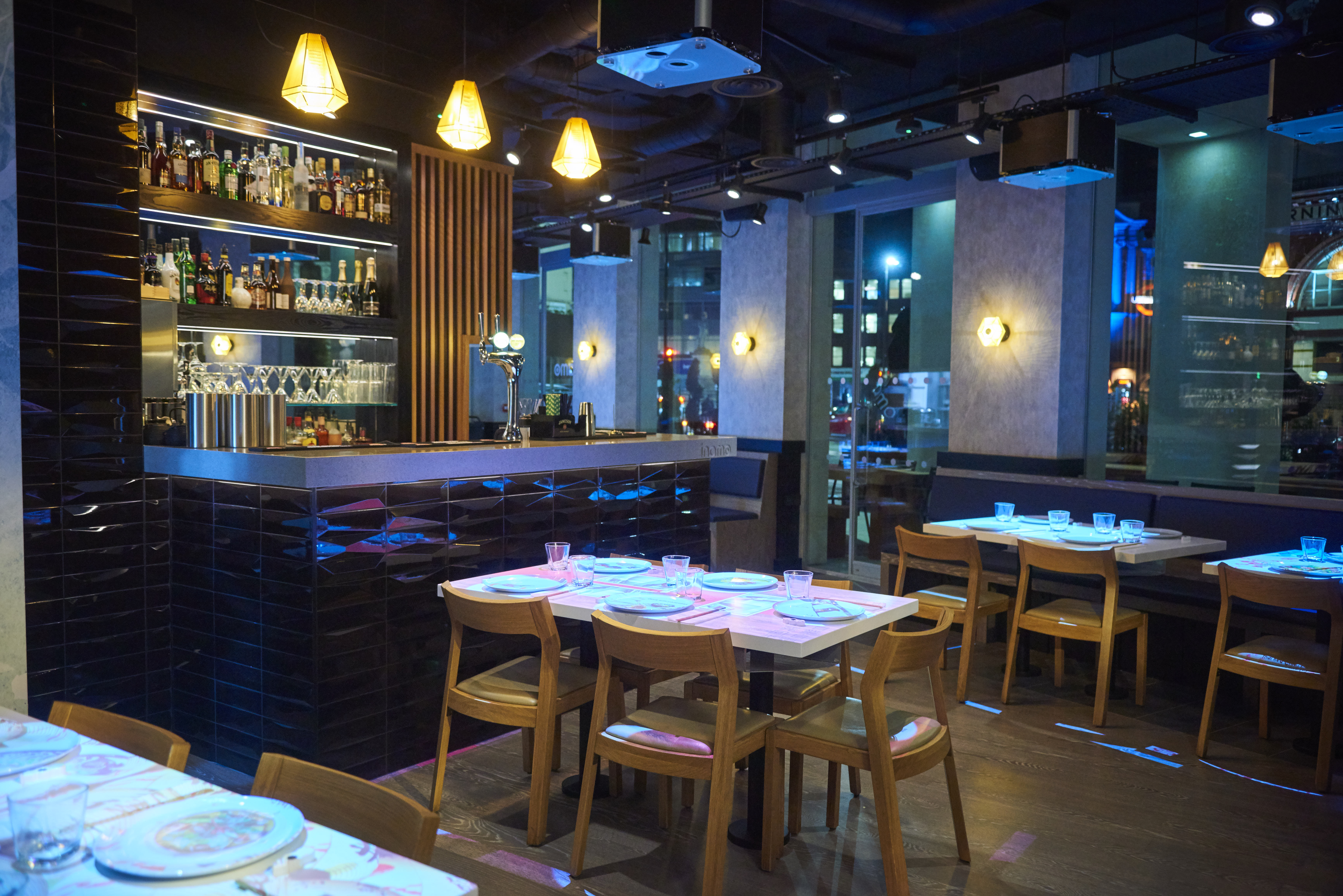
“We have technology that is on the one hand simple and entertaining (so guests have games to play, or the ability to draw on the table, etc., while you wait for your food to arrive), and on the other is highly functional, making it easier for guests to order what they want when they want it, and for team members in streamlining the processes of ordering.
As for the future, Inamo has a few things to help enhance the visiting experience further, including a visible jukebox on tables, but also turning areas at and around the bar into more interactive spaces.
“We’ll soon likely have a feature on the tables to see what music is currently playing (and the previous and next tracks) with its artwork, and that could potentially grow into a jukebox function.
“We’re also developing the CMS (Content Management System) for the restaurants to make it easier to drop new content into iFrames on the tables – so that guests could have custom video, presentations, or any other web-based content featured on their tables.
“We’re developing a major reinvention of the bar space area at our Soho restaurant to feature large wall projections and make it an interactive games room experience and private space.
He concluded: “We’ve got to keep progressing with new concepts, both tech and food driven. It’s always got to be the overall experience, people might come initially and a few further times for the concept, but they’ll keep coming back because the food quality and service matches it.”
